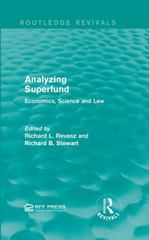Ch. 6-7 Economics: Prices and Market Structure 1. Which of these best describes prices in a market economy? 2. What happens at the "equilibrium price"? 3. Why does an increase in gas prices lead to less consumer spending on other items? 4. On a supply and demand graph, the demand curve generally does what? 5. What is a method by which the government allocates goods and services without prices? 6. What are character differences between price ceilings and price floors? 7. What are the differences between shortages and surpluses? 8. Although the government's effort to control rent achieves the goals of economic equity and economic security, it tends to conflict with the goal of 9. What advantage does price offer when a natural disaster affects the availability of items such as oysters, which experienced a temporary spike in price following Hurricane Sandy in 2012? 10. What do price ceilings and price floors prevent? 11. What terms best describe rent control? 12. What do prices help buyers and sellers make? 13. A surplus shows up as the number of units of a product. 14. How do prices function as signals that help us make economic decisions? 15. Why do compromises between producers and consumers lead to prices fair for both? 16. How does the market move toward equilibrium? 17. How does the government ensure that farmers receive a target price for their goods? 18. What do most economists believe is the most efficient way to allocate resources? 19. What are the causes of price changes most of the time? 20. Which industries best exemplify an oligopoly? 21. What level of government is most closely associated with zoning? 22. Consumers pay higher prices in markets dominated by oligopolies because oligopolies 23. The government does not try to eliminate all monopolies. Why? 24. By promoting transparency, the government can improve 25. A public utility is considered an acceptable type of natural monopoly because it_ 26. Given a variety of government interventions designed to protect markets and consumers, the U.S. economy is best described today as a modified economy. 27. What is the purpose of the Consumer Financial Protection Bureau? 28. What would an economist say best describes a "trust"? 29. What are some benefits of a monopoly? 30. What do externalities indicate? 31. What does it mean to have unemployed resources? 32. What happens when some of the costs or benefits associated with production and consumption fall on someone other than the producers or consumers of a product? 33. To attract buyers, monopolistic competitors tend to rely on 34. Which market structure is defined by a single producer? 35. What condition differentiates a market of pure competition from one of monopolistic competition? 36. Under perfect competition, what sets the equilibrium price in the market? 37. For a firm using economies of scale, the average cost of production. as the firm grows larger. 38. How do government regulations maintain competitive markets? 39. List a few examples of positive and negative spillover effects for an issue. 40. What are positive and negative externalities? 41. What are some examples of a public good? 42. In 1890, the government passed the Sherman Antitrust Law to 43. In 1914, the government passed the Clayton Antitrust Act to outlaw the sale of the same product to different consumers at different prices, a practice known as 44. The Sherman Act, the Clayton Act, and the Federal Trade Commission Act were all designed to 45. A woman borrows money from a bank to purchase a house. She promises to give the bank the house if she cannot repay the loan. This woman has signed a 46. When a factory pollutes a river, the resulting water pollution is an example of a 47. What factors contribute to market failure? 48. Government requirements that promote transparency are an attempt to prevent market failures caused by 49. What are the functions of the Federal Trade Commission? 50. Which term describes commodities such as police and fire protection? 51. What is most associated with the economic philosophy of Adam Smith







